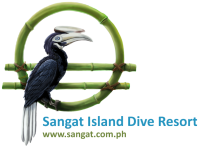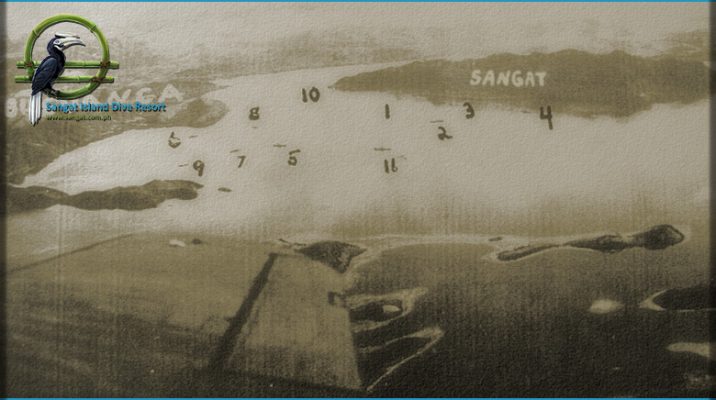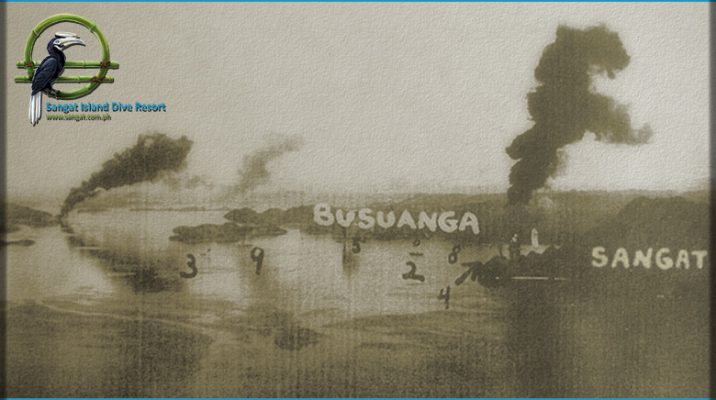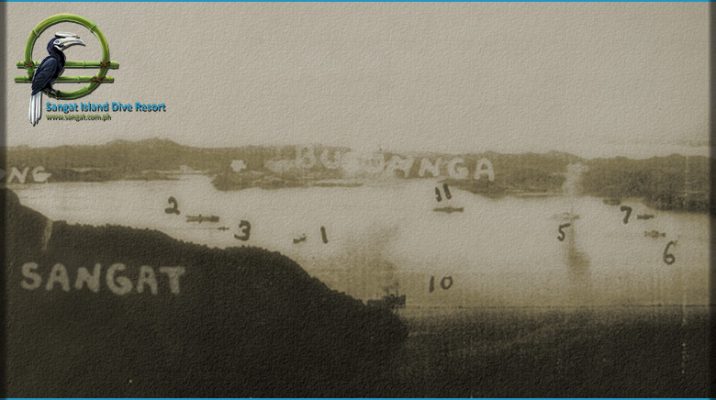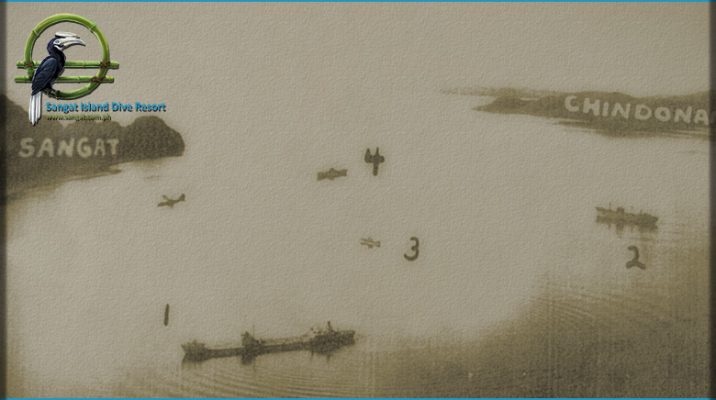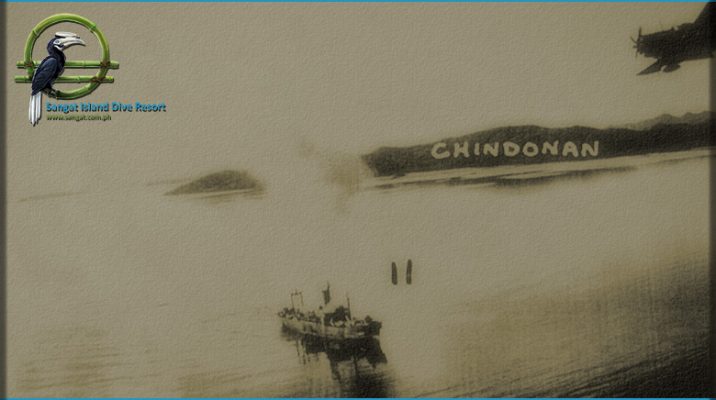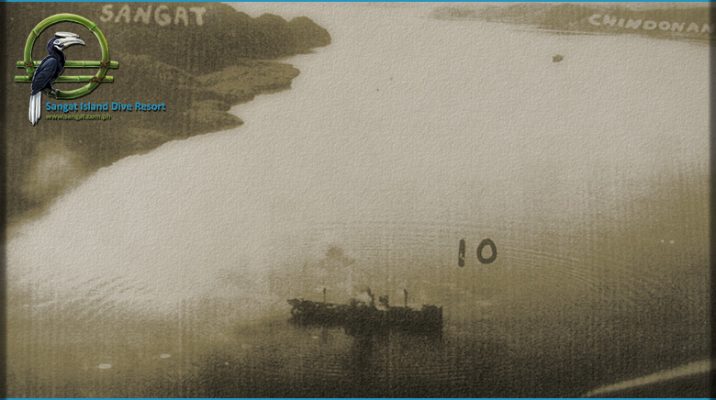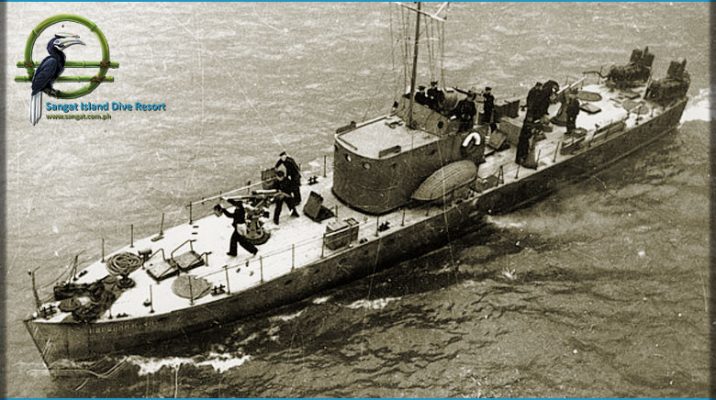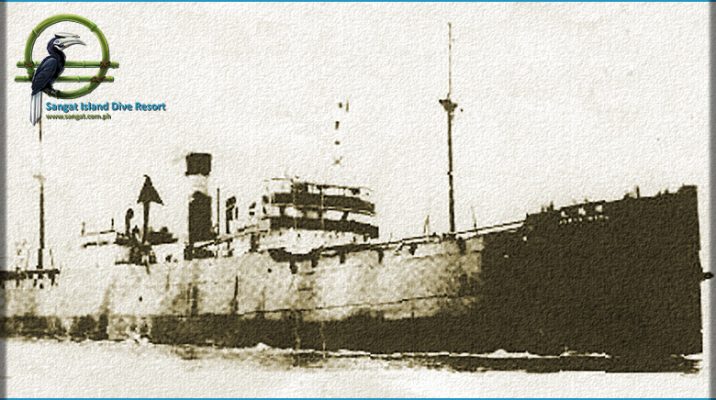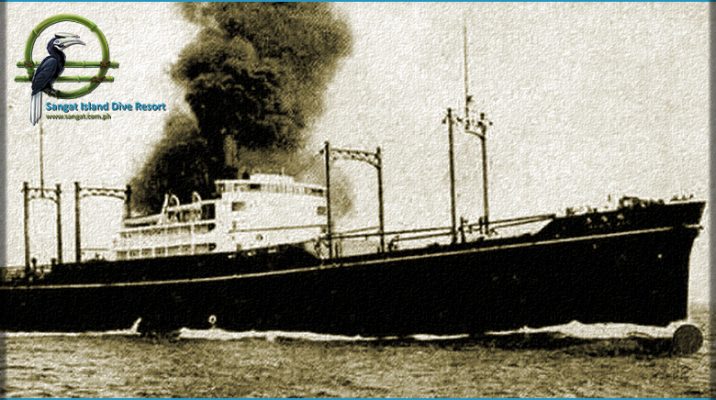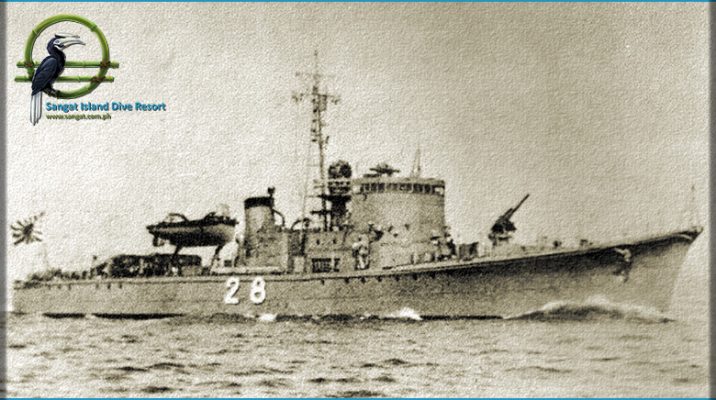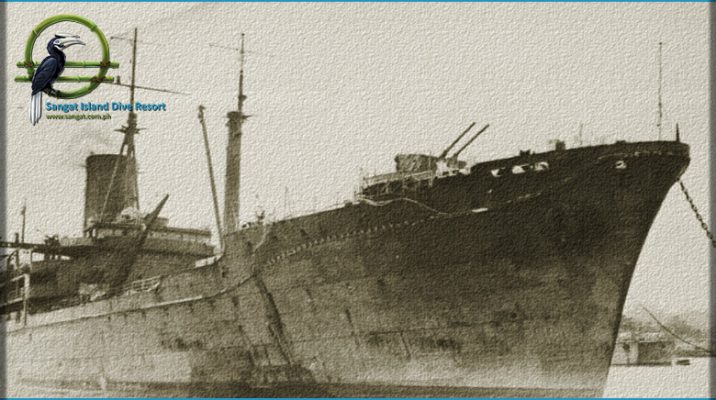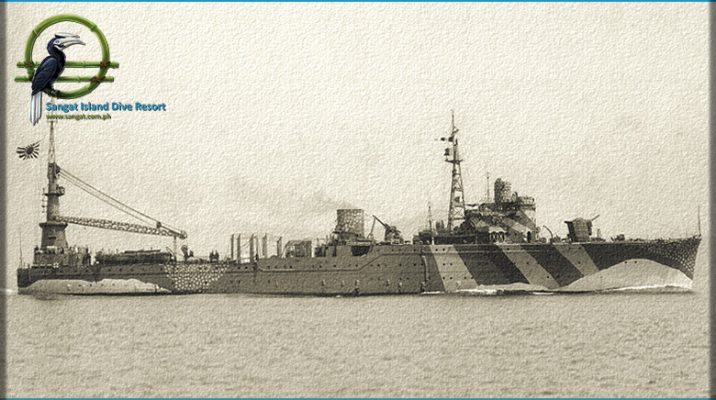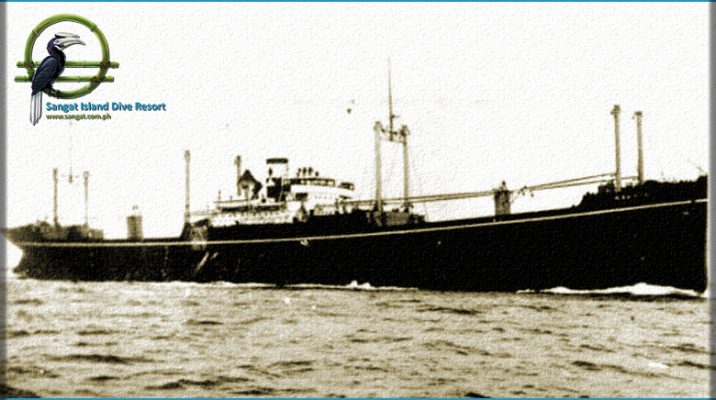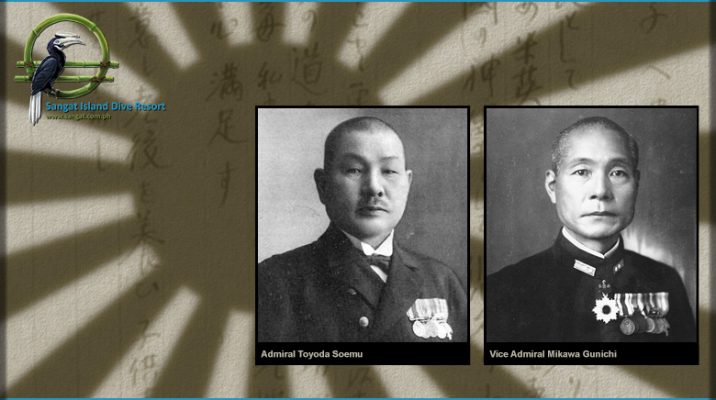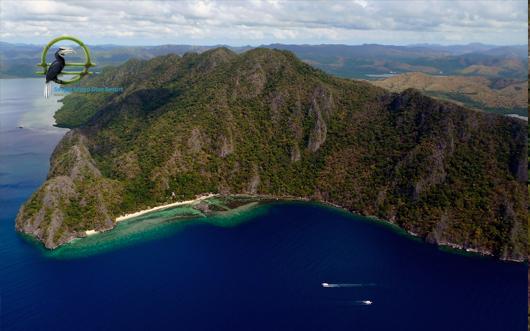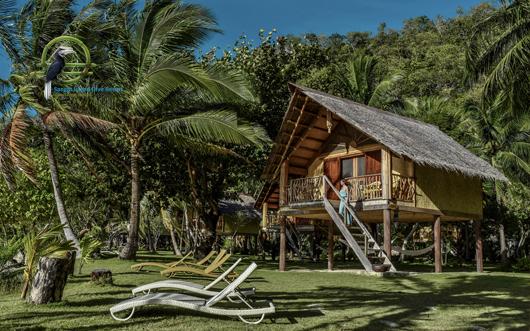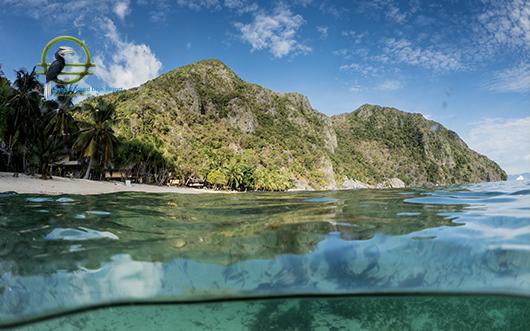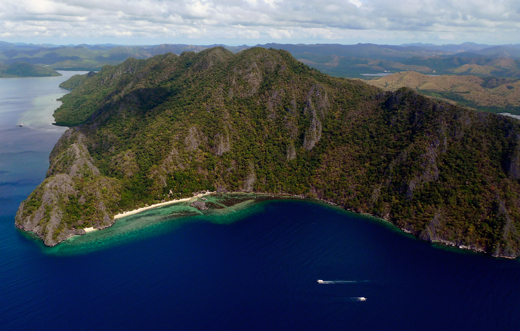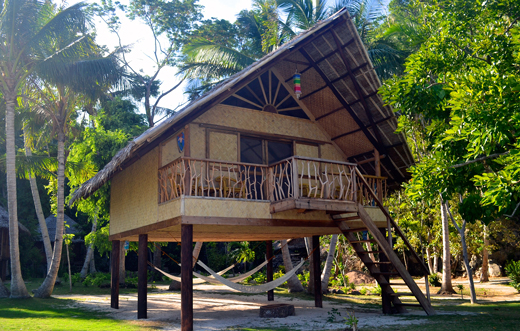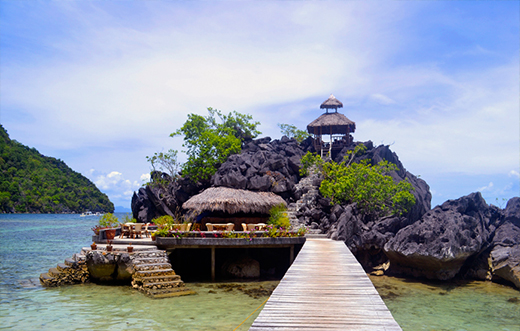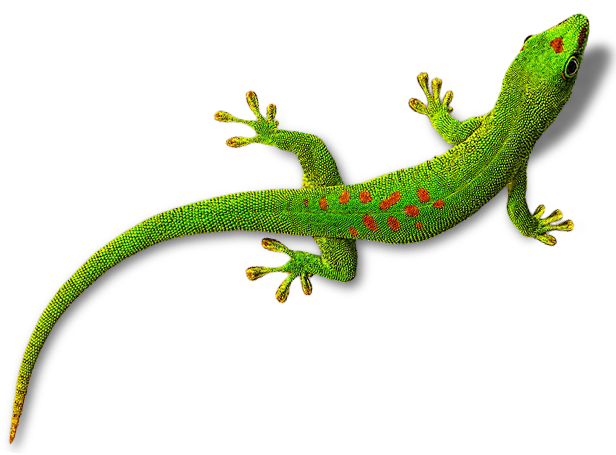
The Background
The Attack
On the morning of 24 September 1944 at 0550, 96 Grumman F6F Hellcat fighters and 24 Curtiss SB2C Helldiver dive bombers took off from their carriers toward their targets. 3 hours later, the strike force reached Busuanga Island and found their targets: 11 large Japanese war and supply ships at anchor.
On arrival, the squadron of Curtiss Helldivers attacked both the Akitsushima and Okikawa Maru. Even though The Akitsushima – a heavily armed seaplane tender – aggressively engaged her attackers, she was soon overcome by multiple hits, internal explosions and fire. In the first 15 minutes of the attack, the Akitsushima sank in the passage between Lajo and Manglet Island.
The Okikawa Maru – fully laden with fuel oil, was also quickly disabled and on fire. Although crippled, she remained afloat and slowly drifted to the north. On the 9th of October, during a second “mop-up” attack, The Okikawa Maru was finally sunk.
Ten dive bombers took on The Olympia Maru. After three American pilots completed runs on the ship, a fourth attack plane hit the vessel amidships which left her unable to maneuver and vulnerable to further attack. Finally, the Olympia Maru sank from the stern, reportedly taking 19 crew members with her.
Heavily protected by anti-aircraft armament, the Irako responded to her attackers with ferocity but was eventually overcome and sunk. The remaining Japanese ships anchored in Coron Bay that morning succumbed – in quick succession – to a similar fate including the Kogyo Maru which sank near Lusong Island.
The final casualty of the attack was the Kyokuzan Maru. Anchored on the opposite side of Busuanga Island, the Kyokuzan sustained severe damage by numerous dive bombings and strafing runs. Now a useless burning hulk, she was eventually scuttled by the Japanese.
The only vessel to survive the attack was an oil tanker named The Kamoi. Although badly damaged by attacking forces, the Kamoi was able to eventually escape Coron Bay. Sometime later, she was reportedly able to make port in Hong Kong.
